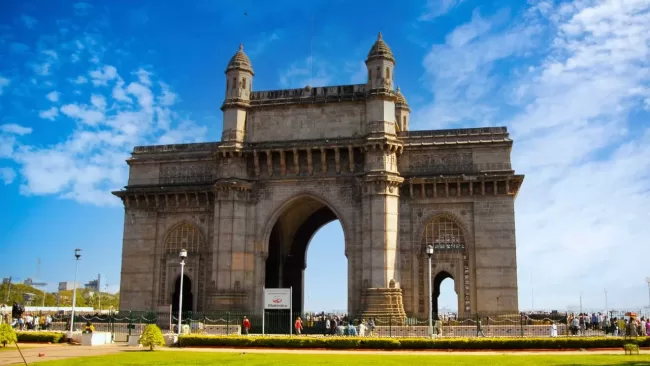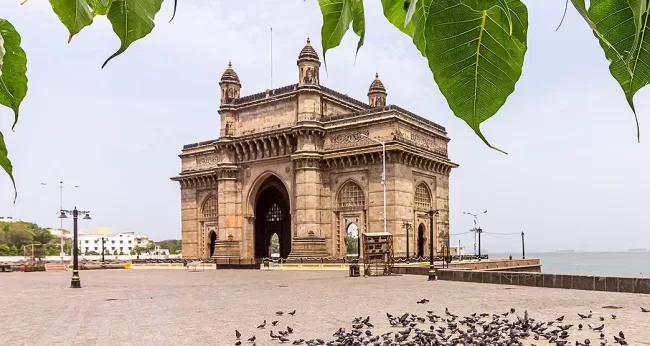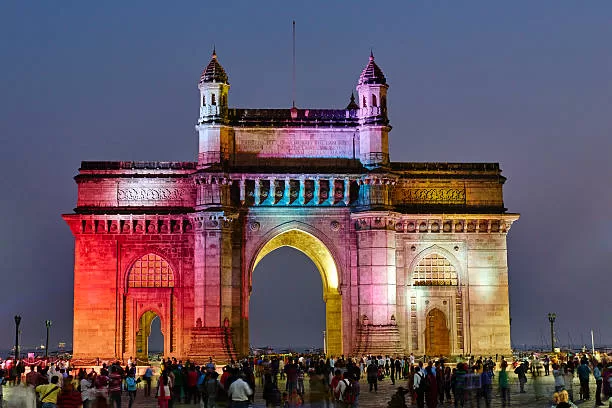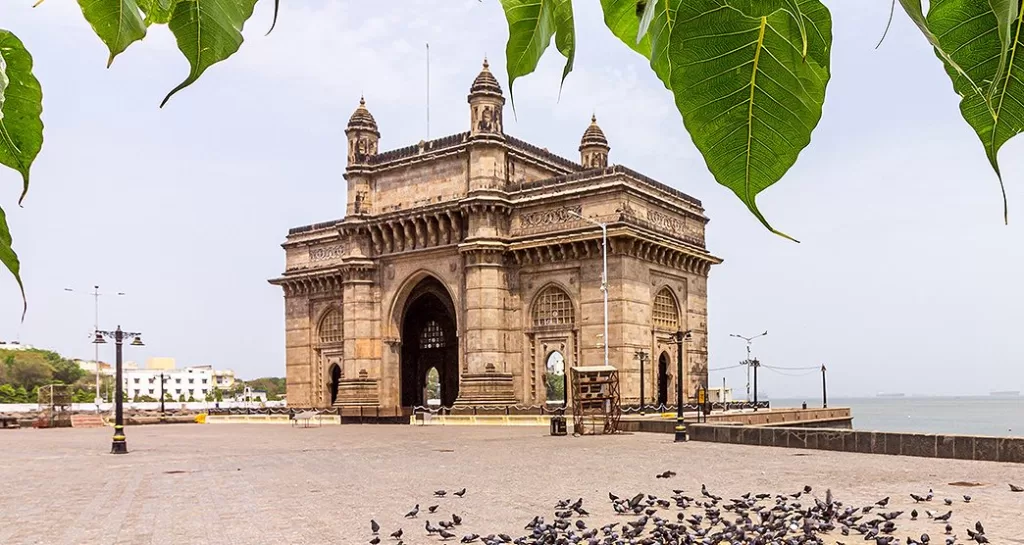The Gateway of India: A Masterpiece of Architecture and History Rising 26 meters into the Mumbai skyline, the Gateway of India is a stunning fusion of yellow basalt and concrete, adorned with intricate motifs inspired by both Muslim and Hindu traditions. Its central dome, a hallmark of Islamic architectural brilliance, boasts a striking 48-foot diameter and soars to a height of 83 feet, leaving visitors in awe of its grandeur.
The Gateway of India A Timeless Architectural Wonder
Constructed in 1924 under the guidance of architect George Wittet, the Gateway of India stands as a symbol of Mumbai’s enduring spirit. Originally built to commemorate the visit of King George V and Queen Mary in 1911, this iconic monument blends Indian, Arabic, and Western architectural styles seamlessly, representing both innovation and cultural harmony.

A Historic Journey of The Gateway of India
The Gateway’s foundation was laid in 1911, and over the next 13 years, it transformed into a magnificent symbol of a nation’s story. More than just an entryway, the Gateway became a marker of history, witnessing both colonial grandeur and India’s evolving identity.
ALSO READ: Anjuna Beach: The Iconic Hub of Goan Culture and Vibrance
The Arch and Its Legacy
Once a bustling maritime passage, the arch symbolized the gateway to and from India. Today, it stands as a silent sentinel, echoing the stories of the past. By night, the monument’s beauty is elevated, as moonlight dances on its intricate details, creating an ethereal glow.
A Monumental Experience
Step beneath the arch to explore its vast hallways, where history comes alive through every detail. Ascend the steps behind the structure, and you’re greeted by a panoramic view of the Arabian Sea—a breathtaking reminder of the Gateway’s enduring role as both witness and participant in Mumbai’s journey.
Whether you’re drawn to its architectural elegance or the historical significance it embodies, the Gateway of India is more than just a monument—it’s a timeless icon of Mumbai’s rich heritage.
The Gateway of India A Monument of Transition and Transformation
The Gateway of India stands as a poignant symbol of history and change. It witnessed the departure of the last British ship from Indian shores, marking the end of colonial rule and transforming its significance from an exit point to a gateway of independence. During British rule, it served as a vital maritime corridor connecting India to the world. After independence, it became a proud symbol of national heritage, drawing travelers and admirers from across the globe.
Beneath the grandeur of its majestic arch lies a land with its own rich narrative. What began as a simple jetty for local fishermen evolved over time. This unassuming spot became a bustling pier for British governors, undergoing gradual transformations that culminated in the creation of the iconic Gateway of India. Today, this monument bridges the gap between history and modernity, standing as a testament to resilience, evolution, and unity.

A Portal to Eternity: Unveiling Heritage and History
The Gateway of India’s transformation from concept to reality took nearly four years, starting in 1920. Finally, on December 4, 1924, the masterpiece was unveiled by the Earl of Reading, the then Viceroy of India. Every carefully placed stone and intricately carved detail reflects the skill and dedication that brought this iconic monument to life, standing today as a timeless sentinel bridging generations.
Far more than a tourist attraction, the Gateway serves as a portal to treasures beyond its own grandeur. Ferries departing from here whisk travelers toward the awe-inspiring Elephanta Caves, a UNESCO World Heritage Site. Carved directly into rock, these ancient cave temples, dating back to the 5th–7th centuries, tell stories of artistry and devotion. A journey to Elephanta is more than a boat ride—it’s a voyage through time, uncovering history etched into stone.
Beneath the Gateway’s towering arches, past and present intertwine. Farewells and arrivals, humble beginnings, and soaring ambitions find a voice here. It is not just a monument but an invitation—to stand in its shadow, hear the echoes of history, and embrace the stories it continues to inspire.
Enhancing Your Experience at the Gateway of India
Explore the Mystical Elephanta Caves
Set sail from the Gateway and journey to Elephanta Island, home to the magnificent rock-cut cave temples dedicated to Lord Shiva. Dating back to the 5th–7th centuries. These UNESCO World Heritage structures showcase intricate carvings and timeless artistry, offering a glimpse into India’s rich cultural past.
Take a Stroll Along Marine Drive
Extend your visit with a walk along the iconic Marine Drive, affectionately known as the Queen’s Necklace. This 3.6 km stretch along South Mumbai’s coastline provides breathtaking views of the Arabian Sea. Whether you’re enjoying a romantic evening walk, a peaceful morning jog, or a laid-back moment with friends. Marine Drive offers a serene escape in the heart of the city.

Savour the Culinary Wonders of Mumbai
Experience the diverse flavors of Mumbai, a city renowned for its gastronomic treasures. From vibrant street food to upscale dining, there’s something for every palate. Savor iconic treats like Vada Pav, Pav Bhaji, Bhel Puri, and Sev Puri from bustling street-side stalls. For a unique twist, delve into the rich and flavorful world of Parsi cuisine. A delightful fusion of Iranian and Indian influences.
Discover Serenity at Mahalaxmi Temple
Step into the spiritual embrace of the Mahalaxmi Temple, one of Mumbai’s oldest and most revered sanctuaries. Dedicated to the Goddess of Wealth, Mahalaxmi, this historic temple reflects the city’s cultural heritage through its timeless architecture. Dating back to the 16th and 17th centuries, it stands as a cherished symbol of faith and history in Mumbai.
Visit the Iconic Haji Ali Dargah
Embark on a soulful journey to the Haji Ali Dargah. A stunning shrine perched on a tiny islet off the Mumbai coast. Built in honor of the Muslim saint Haji Ali Bukhari. Who devoted his life to spreading compassion and faith, the Dargah is a masterpiece of Indo-Islamic architecture. It’s a serene place of devotion, artistry, and history, offering a glimpse into Mumbai’s spiritual heart.



